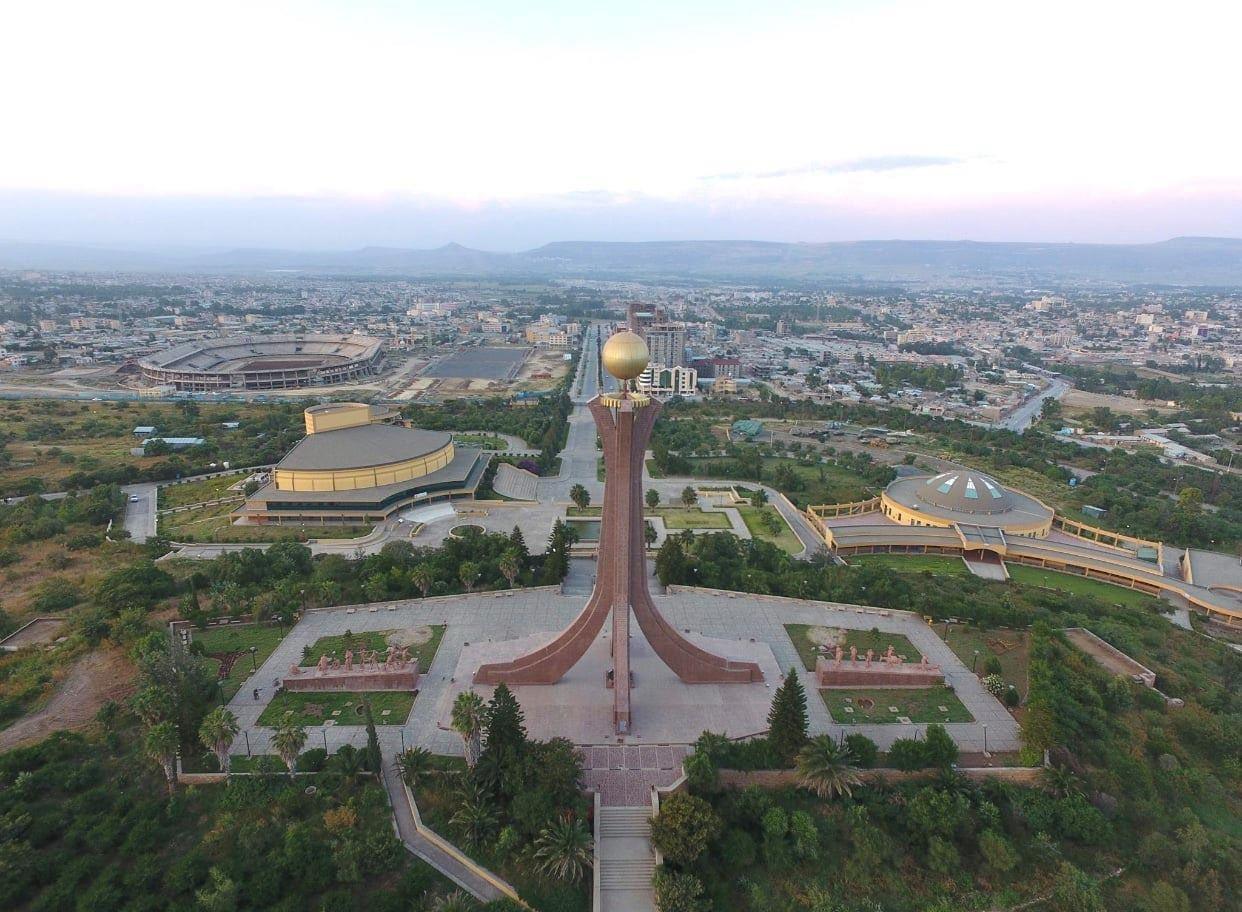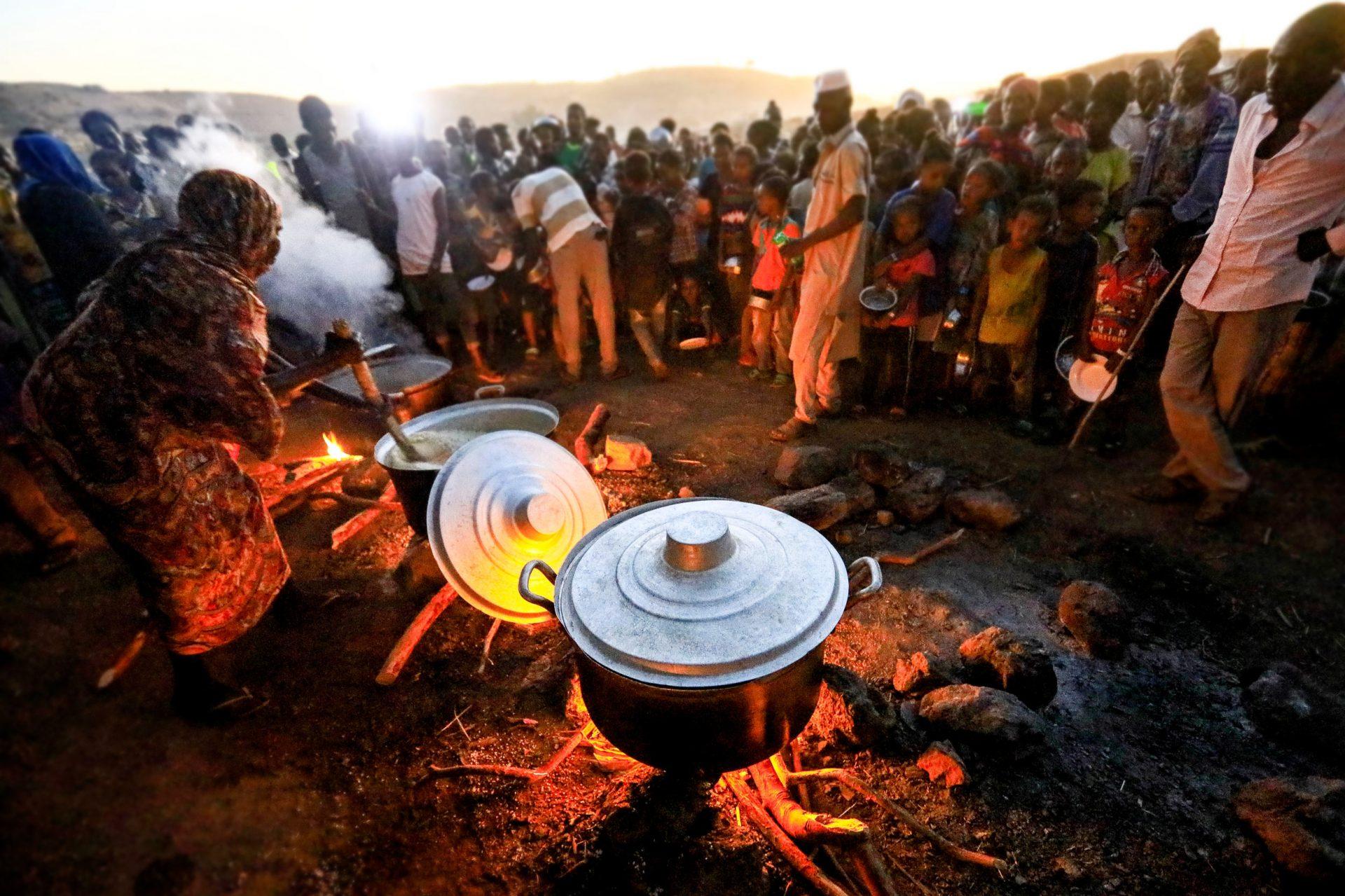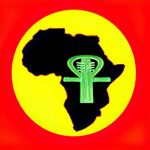Forum Replies Created
-
AuthorPosts
-
Ethiopian refugees wait in line for a meal at the Um Rakuba refugee camp, on the Sudan-Ethiopia border

International Committee of the Red Cross say hospitals & health facilities in Tigray state capital Mekelle are running low on medical supplies. Say Ayder Referral Hospital is low on sutures, antibiotics, food supplies painkillers and body bags for the deceased.
Let’s be honest! Just now the end of TPLF! Please stop and think again! What TPLF has done to Tigray people,27 yrs?How many Tigrians are suffering from deep poverty!Tigray people need change! Need peace and prosperity! Tigray people need to live with Amhara and Eritrean people!
Ethiopia Autonomous Media
Speaking about Tigray refugees in Sudan, Abiy Ahmed Ali told MPs “There are no women and children [among them]. Those who are said to be refugees are only young [men]. Time will tell who are those youngsters.”



Nearly half of the refugees are children and women constitute a significant number of all registered adults. We saw and spoke to many of them in the refugee camps we visited in Sudan.
Ethiopia Autonomous Media
Tigray is steeped in rich history, culture & religion. Yet recurrent wars have disrupted the rhythm of ancient life.
 I remember growing up in Harar during derg era, my mom always lamented about detachments from her ancestral land & churches of Gheralta. I hope this is the last war.
I remember growing up in Harar during derg era, my mom always lamented about detachments from her ancestral land & churches of Gheralta. I hope this is the last war.Ethiopia Autonomous Media
Reports stating that over 6,000 refugees were kidnapped from camps within Tigray & Shire and forcefully taken back to Eritrea is a dangerous situation & a violation of human rights.
 We are requesting for the international community to charge Abiy Ahmed Ali & Isaias Afwerki with war crimes.
We are requesting for the international community to charge Abiy Ahmed Ali & Isaias Afwerki with war crimes.Ethiopia Autonomous Media
29th November 2020 at 4:00 pm in reply to: The war in Tigray is being complicated by ideological ambitions #333A pair of burned-out tanks now signals the entrance to the Tigray town of Humera, where the streets are lined with rubble and residents remain in shock after an Ethiopian army assault earlier this month.

The conflict between Ethiopia’s federal government and the leaders of the northern Tigray region arrived quickly in the farming town, with artillery barrages bombarding commercial buildings and homes as residents fled or cowered in terror.
A communications blackout and restrictions have made reporting on the conflict difficult, but AFP news agency journalists reached Tigray – the first independent journalists to report from inside the conflict zone since fighting started – and found the scars of conflict everywhere.

“We didn’t expect shelling,” said Humera resident Getachew Berhane, a short, bald 42-year-old in a crisp yellow T-shirt.
“Suddenly, we started to hear war weapons, explosions, and then people panicked.”
“I couldn’t leave my house. I was terrified,” he said, as an Ethiopian government official accompanying the AFP team listened in.

The Ethiopian army, battling forces loyal to the Tigray People’s Liberation Front (TPLF), declared Humera “liberated” on November 12 after heavy clashes in the first days of the conflict.
Bombs ‘from the north’
The power lines remain cut in Humera, a low-slung town of pastel-painted concrete buildings that was – until recently – home to about 30,000 people.A gaping hole has been punched through the brick facade of the prominent Hotel Africa, while other structures have been peppered with bullet holes and gouged by shrapnel.
In the city centre, soldiers lolled on plastic chairs beneath the shade of trees.
Elsewhere, the city’s remaining residents huddled around televisions run on diesel generators as military vehicles and tractors drove the cobbled and paved roads.

The town lies near Ethiopia’s borders with Sudan and Eritrea. Many of Humera’s residents were among the first of the more than 30,000 Ethiopians who have fled into eastern Sudan for safety, leaving the city feeling abandoned.
Multiple people told AFP that during the battle they witnessed mortar bombs whistling in “from the north”, meaning Eritrea.

Ethiopia’s government denies TPLF claims that Eritrea is involved in the fighting, but acknowledges making use of Eritrean territory.
‘Hand-to-mouth living’
At one tin-roofed residential compound, AFP was told that two women and an elderly man were killed by shelling and gunfire.
Two injured women still lay recovering from their wounds weeks later, strapped to makeshift stretchers.
One Humera resident said he knew of at least 10 people killed in his neighbourhood alone, however, AFP was not permitted to visit the hospital to establish an accurate death toll.

A crossroads town in Ethiopia’s far northwest, a hot, dry, agricultural lowland, Humera promised prosperity before the start of the conflict.
“This town was on the verge of development,” said Tewodros Gebreselassie, a grim-faced, grey-bearded sesame trader. “But now it’s been brought back to hand-to-mouth living because of an unnecessary war.”
Prime Minister Abiy Ahmed – last year’s Nobel Peace Prize winner – announced military operations in Tigray on November 4, saying they were in response to TPLF attacks on federal army camps.
Hundreds are believed to have died since, while tens of thousands have fled their homes.
The intense fighting has rolled eastwards, into the mountainous highlands and towards the regional capital Mekelle, a city of half a million.
On Sunday, Abiy gave TPLF leaders 72 hours to surrender before a threatened all-out assault on Mekelle.
Outsiders move in
With fighting having subsided in the west of Tigray, government officials are seeking to reimpose order in Humera.The strategy appears to be erasing TPLF control partly by bringing administrators in from the neighbouring Amhara region, a move that risks inflaming ethnic tensions.
Throughout much of the west, federal soldiers are scarcely seen, instead, security is maintained by Amhara’s uniformed “special forces”.
Civil servants have also arrived from Amhara to take over the administration of some Tigrayan towns and cities.
Daniel Wubet, an Amhara tourism official in a tracksuit and vest, said he was in Humera to oversee “peacekeeping”, procure basic necessities for the population and “educate” them on the TPLF’s misdeeds.
Daniel, who had an assault rifle slung from his shoulder, has co-opted some local Tigrayans into the rebuilding exercise, among them Tewodros.
“They said I haven’t done anything wrong and that I’m a pure Ethiopian,” Tewodros explained of his appointment.
The presence of Amhara officials and soldiers will increase fears of occupation among Tigrayans, who are mired in a decades-old dispute over land that has, in the past, sparked violent clashes and continues to be a dangerous flashpoint.
Abrehu Fentahum, an elderly Amhara farmer living in western Tigray, said he looked forward to the land being returned to Amhara control, even though Daniel and others stress that this is not their goal.
“As long as I can remember, this land belonged to Amhara”, until 1991 when “it was taken by the TPLF”, he said.
Already, visible traces of the TPLF are being expunged, its banners replaced by the green, yellow and red imperial-era flag of Amhara nationalism that now flies high at checkpoints and town squares.
These symbols will not allay Tigrayan fears of occupation, nor will the word “Amhara” scrawled on shuttered storefronts like a hastily graffitied claim of ownership.
Speaking to AFP by text message, TPLF leader Debretsion Gebremichael warned the presence of Amhara administrators and fighters would only prolong the conflict.
“This is one of their evil plans to weaken Tigray,” he said.
“We’ll continue to fight until they are cleared from all places.”
Ethiopia Autonomous Media
The baby was born on the run from war. Her first bath was in a puddle. Now she cries all night in a country that is not her own.
 Tigray refugees who fled the conflict in Ethiopia’s Tigray region, wait to get cooked rice served by Sudanese local volunteers at Um Rakuba refugee camp in Qadarif, eastern Sudan, Monday, Nov. 23, 2020. Tens of thousands of people have fled a conflict in Ethiopia for Sudan, sometimes so quickly they had to leave family behind. There is not enough to feed them in the remote area of southern Sudan that they rushed to.
Tigray refugees who fled the conflict in Ethiopia’s Tigray region, wait to get cooked rice served by Sudanese local volunteers at Um Rakuba refugee camp in Qadarif, eastern Sudan, Monday, Nov. 23, 2020. Tens of thousands of people have fled a conflict in Ethiopia for Sudan, sometimes so quickly they had to leave family behind. There is not enough to feed them in the remote area of southern Sudan that they rushed to.
Wrapped in borrowed clothing, the child is one of the newest and most fragile refugees among more than 40,000 who have fled the Ethiopian government’s offensive in the defiant Tigray region.

Lemlem Haylo Rada, 25, who fled the conflict in Ethiopia’s Tigray region, holds her one-month old baby in front of her shelter, at Um Rakuba refugee camp in Qadarif, eastern Sudan, Monday, Nov. 23, 2020. Tens of thousands of people have fled a conflict in Ethiopia for Sudan, sometimes so quickly they had to leave family behind. There is not enough to feed them in the remote area of southern Sudan that they rushed to.
They have hurried into Sudan, often under gunfire, sometimes so quickly they had to leave family behind. There is not enough to feed them in this remote area, and very little shelter. Some drink from the river that separates the countries, and more cross it every day.
 A general view of Um Rakuba refugee camp in Qadarif, eastern Sudan, Monday, Nov. 23, 2020. Tens of thousands of people have fled a conflict in Ethiopia for Sudan, sometimes so quickly they had to leave family behind. There is not enough to feed them in the remote area of southern Sudan that they rushed to
A general view of Um Rakuba refugee camp in Qadarif, eastern Sudan, Monday, Nov. 23, 2020. Tens of thousands of people have fled a conflict in Ethiopia for Sudan, sometimes so quickly they had to leave family behind. There is not enough to feed them in the remote area of southern Sudan that they rushed to
“We walked in the desert. We slept in the desert,” said one refugee, Blaines Alfao Eileen, who is eight months pregnant and has befriended Lemlem Haylo Rada, the mother of the newborn. One woman is ethnic Tigrayan, the other ethnic Amhara. The conflict could have turned them against each other, but motherhood intervened.
Her journey took four days. “I slept on this scarf that I am holding,” she said, “and I would wake up and do it again.”
Almost half the refugees are children under 18. Around 700 women are currently pregnant, the United Nations says. At least nine have given birth in Sudan.
It has been three weeks since Ethiopian Prime Minister Abiy Ahmed sent federal troops into Tigray after accusing the region’s forces of attacking a military base. Abiy’s government and the regional one each view the other as illegitimate, and the Nobel Peace Prize-winning prime minister on Sunday warned that a final assault to take Tigray’s capital is imminent.
Civilians are caught in the middle of what some experts describe as a conflict akin to an inter-state war, so heavily armed is each side.
Many people barely know why they had to flee. Now, people of all classes, from bankers to subsistence farmers, spend up to two weeks in so-called transit centers, waiting in makeshift shelters in arid, almost treeless surroundings just over the border in Sudan; it used to be just two or three days.
 Terhas Tsfa, 25, who gave birth on a street as she fled the conflict in Ethiopia’s Tigray region, holds her baby at Um Rakuba refugee camp in Qadarif, eastern Sudan, Monday, Nov. 23, 2020. Tens of thousands of people have fled a conflict in Ethiopia for Sudan, sometimes so quickly they had to leave family behind. There is not enough to feed them in the remote area of southern Sudan that they rushed to
Terhas Tsfa, 25, who gave birth on a street as she fled the conflict in Ethiopia’s Tigray region, holds her baby at Um Rakuba refugee camp in Qadarif, eastern Sudan, Monday, Nov. 23, 2020. Tens of thousands of people have fled a conflict in Ethiopia for Sudan, sometimes so quickly they had to leave family behind. There is not enough to feed them in the remote area of southern Sudan that they rushed to
Some refugees have little to protect them from the heat and sun and curl under possessions as meager as umbrellas. Men have begun weaving dried grass into temporary homes.
COVID-19 could be passing through the crowds, but the people’s focus is elsewhere. More wear crosses around their necks than face masks.
The local Sudanese villagers have been praised for their generosity, but they have little to give.
More permanent camps for the refugees are a drive of several hours away, and there is sometimes not even enough fuel to transport them there. The threat of hostilities remains while they wait so close to the border.
Some overworked humanitarians have used the bare floor of a local building as a makeshift hospital, treating wounds that refugees say were inflicted with machetes as Ethiopia’s long pent-up ethnic tensions were unleashed.
 Ethiopian Amhara refugee Blaines Alfao Eileen, 8-months pregnant and who fled the conflict in Ethiopia, stands near her shelter, at Um Rakuba refugee camp in Qadarif, eastern Sudan, Monday, Nov. 23, 2020. Tens of thousands of people have fled a conflict in Ethiopia for Sudan, sometimes so quickly they had to leave family behind. There is not enough to feed them in the remote area of southern Sudan that they rushed to
Ethiopian Amhara refugee Blaines Alfao Eileen, 8-months pregnant and who fled the conflict in Ethiopia, stands near her shelter, at Um Rakuba refugee camp in Qadarif, eastern Sudan, Monday, Nov. 23, 2020. Tens of thousands of people have fled a conflict in Ethiopia for Sudan, sometimes so quickly they had to leave family behind. There is not enough to feed them in the remote area of southern Sudan that they rushed to
Authorities are trying to keep ethnic Tigrayan refugees separate from ethnic Amhara ones, out of concern about possible clashes.
“We don’t know who is fighting us. We don’t know who is with us or who is not with us. We don’t know. When the war came, we just ran,” said Aret Abraham.
There is little comfort to be found, even a hot meal. The refugees can wait several hours to receive food. Sometimes they get none.
“I have been here 14 days and have not received anything,” one said. “I have no clothes to wear.” But everyone wears the new plastic bracelet of a refugee, handed out by the U.N. as they are registered.
The U.N. refugee agency has provided food and care to some 300 malnourished Ethiopian children and pregnant and nursing women in Sudan, according to spokesperson Babar Baloch.
 Tigray refugees who fled the conflict in Ethiopia’s Tigray region, play volleyball at Um Rakuba refugee camp in Qadarif, eastern Sudan, Monday, Nov. 23, 2020. Tens of thousands of people have fled a conflict in Ethiopia for Sudan, sometimes so quickly they had to leave family behind. There is not enough to feed them in the remote area of southern Sudan that they rushed to.
Tigray refugees who fled the conflict in Ethiopia’s Tigray region, play volleyball at Um Rakuba refugee camp in Qadarif, eastern Sudan, Monday, Nov. 23, 2020. Tens of thousands of people have fled a conflict in Ethiopia for Sudan, sometimes so quickly they had to leave family behind. There is not enough to feed them in the remote area of southern Sudan that they rushed to.
People sit and wait, and wait. One small girl, frustrated, twisted the head of a plastic doll until the head popped free.
A man wept into the crook of his arm as he held up a tiny photo of his 12-year-old son. The boy was shot dead, he said.
The more permanent camps were last used in the 1980s for Ethiopians fleeing a famine worsened by a yearslong civil war.
 Ethiopian Amhara refugee 8-month pregnant Blaines Alfao Eileen, right, sits with Tigray refugee 25-year-old Lemlem Haylo Rada, holding her one-month old baby who was born on a street as she fled, at Um Rakuba refugee camp in Qadarif, eastern Sudan, Monday, Nov. 23, 2020. Tens of thousands of people have fled a conflict in Ethiopia for Sudan, sometimes so quickly they had to leave family behind. There is not enough to feed them in the remote area of southern Sudan that they rushed to
Ethiopian Amhara refugee 8-month pregnant Blaines Alfao Eileen, right, sits with Tigray refugee 25-year-old Lemlem Haylo Rada, holding her one-month old baby who was born on a street as she fled, at Um Rakuba refugee camp in Qadarif, eastern Sudan, Monday, Nov. 23, 2020. Tens of thousands of people have fled a conflict in Ethiopia for Sudan, sometimes so quickly they had to leave family behind. There is not enough to feed them in the remote area of southern Sudan that they rushed to
For a long time, those images of starving people were seared onto Ethiopia’s reputation. It took decades to turn the country into one of Africa’s biggest success stories, with one of the world’s fastest-growing economies. But behind the boom, political repression kept hostilities among ethnic groups in check.
“We felt like we’d made it, and we were happy,” recalled Menas Hgoos, who now finds herself fleeing to Sudan a second time. “And now Abiy Ahmed is attacking us, we just left with only the clothes on our backs.”
Many of the new refugees are too young to remember past miseries. They are suddenly too burdened with their own — and with worries for those who did not make it out.
“There are also a lot of people who live there who can’t escape here,” said Haftoun Berha, pausing to think of loved ones who are now impossible to reach. “That is so more sad.”
Ethiopia Autonomous Media
Ethiopia issues an additional 27 arrest warrants for military officers it says assisted TPLF forces in looting military bases in the hours leading up to the war.
 Among them, Major General Zewdu Kiros who until 2017, was Deputy Force Commander for UN Peacekeepers in Abyei, Sudan.
Among them, Major General Zewdu Kiros who until 2017, was Deputy Force Commander for UN Peacekeepers in Abyei, Sudan.Also listed among the 27, is Colonel Gebregziabher Alemseged, former commanded of Ethiopian troops in Somalia from 2006-2008, and who was listed on November 18th among a group of 76 TPLF affiliated military officers wanted for treason and assisting the TPLF war effort.
She was head of Purchasing and procurement for Ministry of Defense when she was a colonel. She made billions.
All illegal money that is found in their possession needs to be returned to Tigray and Ethiopian people.
Abiy had also made General Seare chief of staff before assassinating him. He assassinated chief stafF the Ethiopian military, General Seare Mekonen purposely to consolidate his power and act like pro king leader.
Ethiopia Autonomous Media
Lt. Col Abiy Ahmed Ali is bombing my beloved Mekelle. This is the guy who wants to “free” Tegaru by bombing us into Aleppo 2.0.

They may bomb our communities, harm our families, destroy our properties, and force our people to flee, but they will never win our hearts and minds.
Ethiopia Autonomous Media
28th November 2020 at 6:57 pm in reply to: The war in Tigray is being complicated by ideological ambitions #300Intense fighting in Ethiopia’s northern Tigray region for the past three weeks has raised humanitarian concerns over the safety of nearly 100 000 Eritrean refugees, who are living in overcrowded camps as aid workers warn of dwindling humanitarian supplies.

Ethiopian refugees wait for food at the Um-Rakoba camp on the Sudan-Ethiopia border as they flee from the fighting in Tigray.
Abiy Ahmed – who is Ethiopia’s first prime minister of Oromo ethnicity and who received the Nobel Peace Prize last year in part for his efforts to end Ethiopia’s border dispute with Eritrea – began military operations on 4 November against the Tigray People’s Liberation Front (TPLF) that governs the northern Tigray region bordering Eritrea. This was after Abiy accused the TPLF of attacking a federal army base and commandeering weapons.
The fighting, which has included aerial bombardments of locations in Tigray, has since spilled over into neighbouring Ethiopian state Amhara and the TPLF fired rockets at the airport in Asmara, the capital of Eritrea.
Tensions between the TPLF, which dominated Ethiopian politics for three decades until Abiy’s rise to power in 2018, and Abiy’s central government in Addis Ababa have been simmering for some time but escalated dramatically in recent months.
Abiy dissolved the coalition of ethnic regional parties headed by the TPLF that had ruled Ethiopia until 2018 and merged them into a single, national party called the Prosperity Party last year. The TPLF alleged that the merger contradicted Ethiopia’s 1994 Constitution, which defines the country’s structure as a multicultural federation of semi-autonomous, ethnic-based territorial units.
The TPLF held regional parliamentary elections in Tigray in September, in defiance of Abiy postponing the national and regional elections that were scheduled for August because of the coronavirus pandemic. The TPLF accused Abiy of attempting to extend his time in office, while the central government said the Tigray elections were “unconstitutional”.
These tensions have now exploded into open warfare.
‘Life is impossible and unliveable’
Hundreds, possibly thousands, have been killed in the conflict, and there are reports of ethnically motivated mass killings and numerous Tigrayan civilians being racially profiled, arrested and purged from their jobs. This has led to the United Nations warning of a heightened risk of “genocide, war crimes, ethnic cleansing and crimes against humanity”.Rights groups, aid workers and Eritrean advocates fear that Eritrean refugees in Tigray, scattered throughout four camps near the border, are becoming victims to this escalating political conflict.
Ann Encontre, the head of the United Nations High Commissioner for Refugees (UNHCR) in Ethiopia, said the refugee agency is “extremely worried” about the impacts the conflict could have on the Eritrean refugees. The lack of humanitarian access to the Tigray region and its inability to bring in food and supplies is compounding concerns for the refugees, who are almost completely reliant on aid from the UNHCR and its partners, she said.
Ethiopia Autonomous Media
-
AuthorPosts


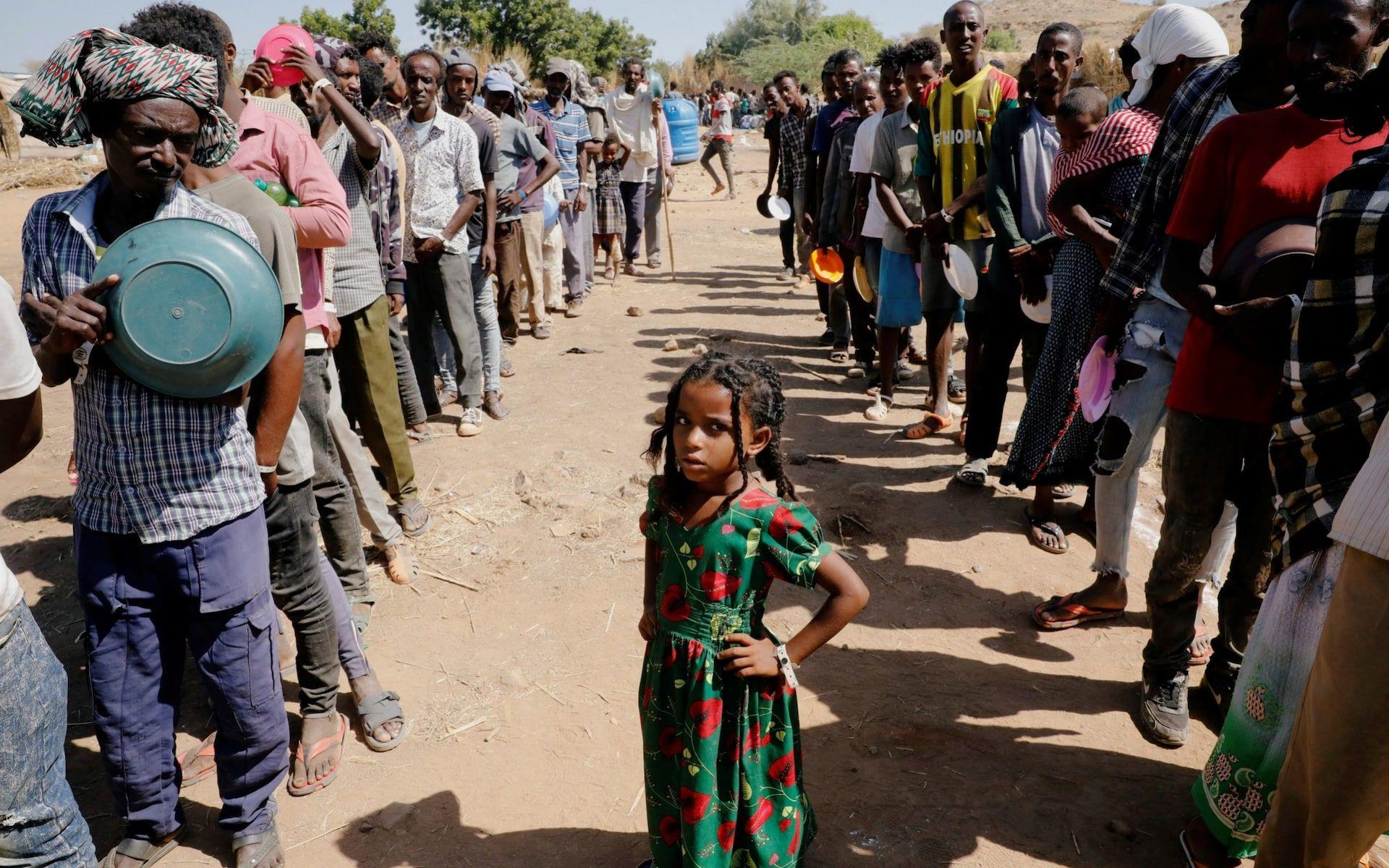
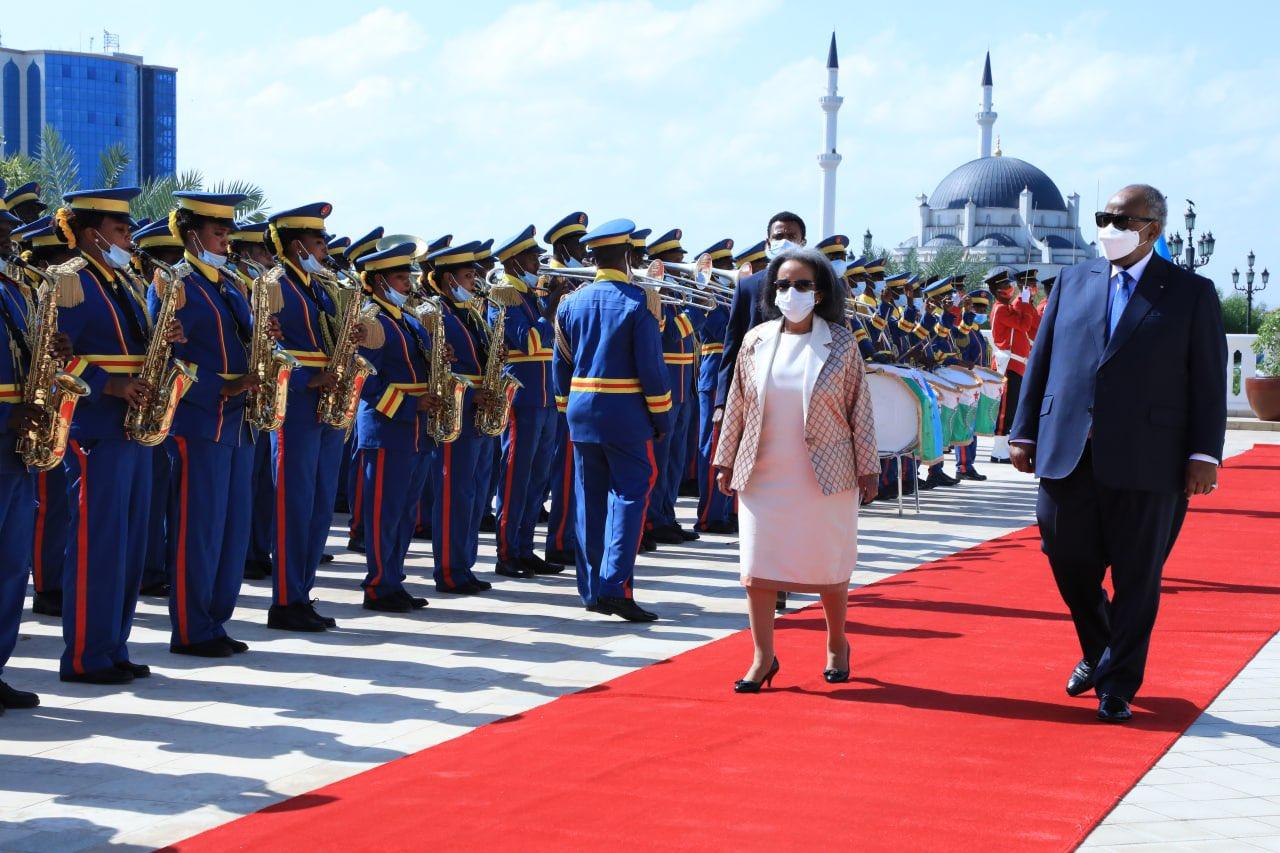
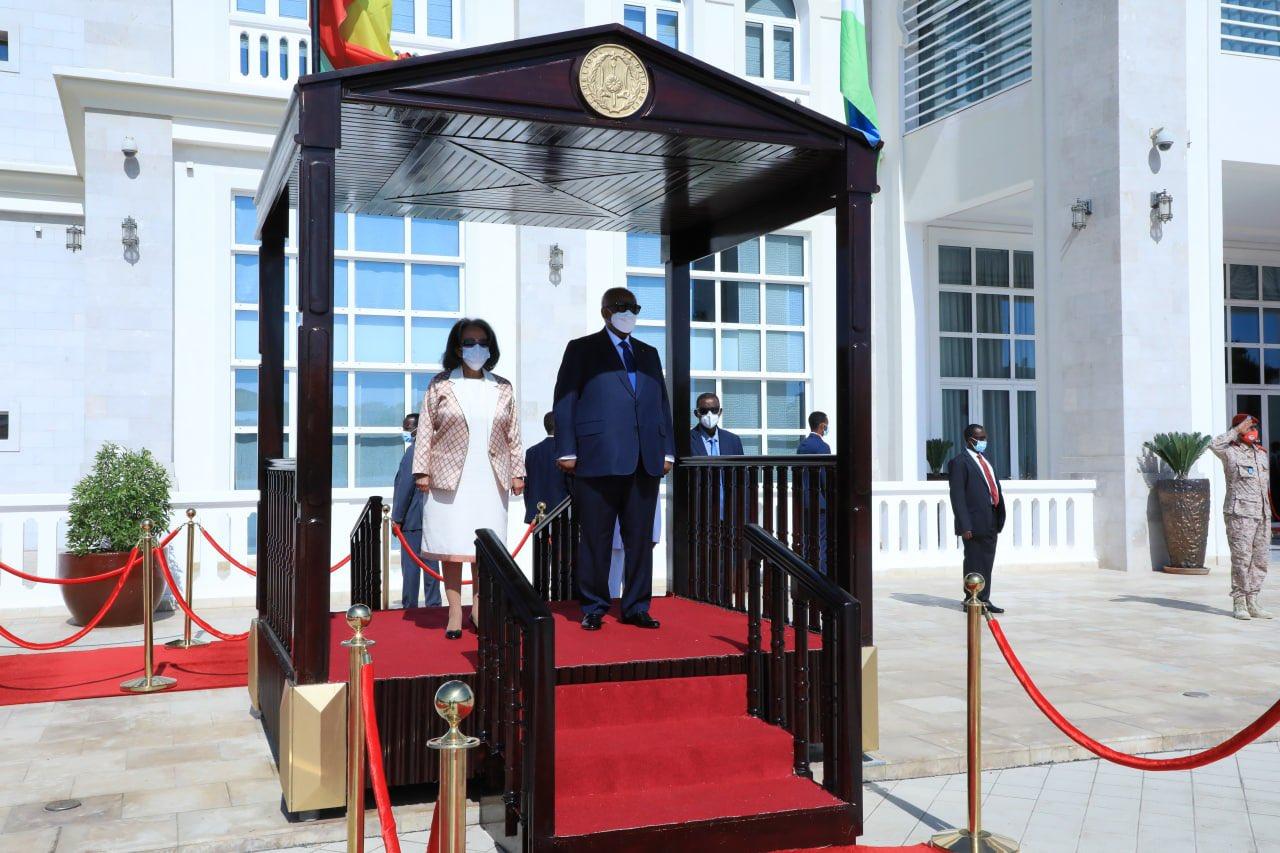
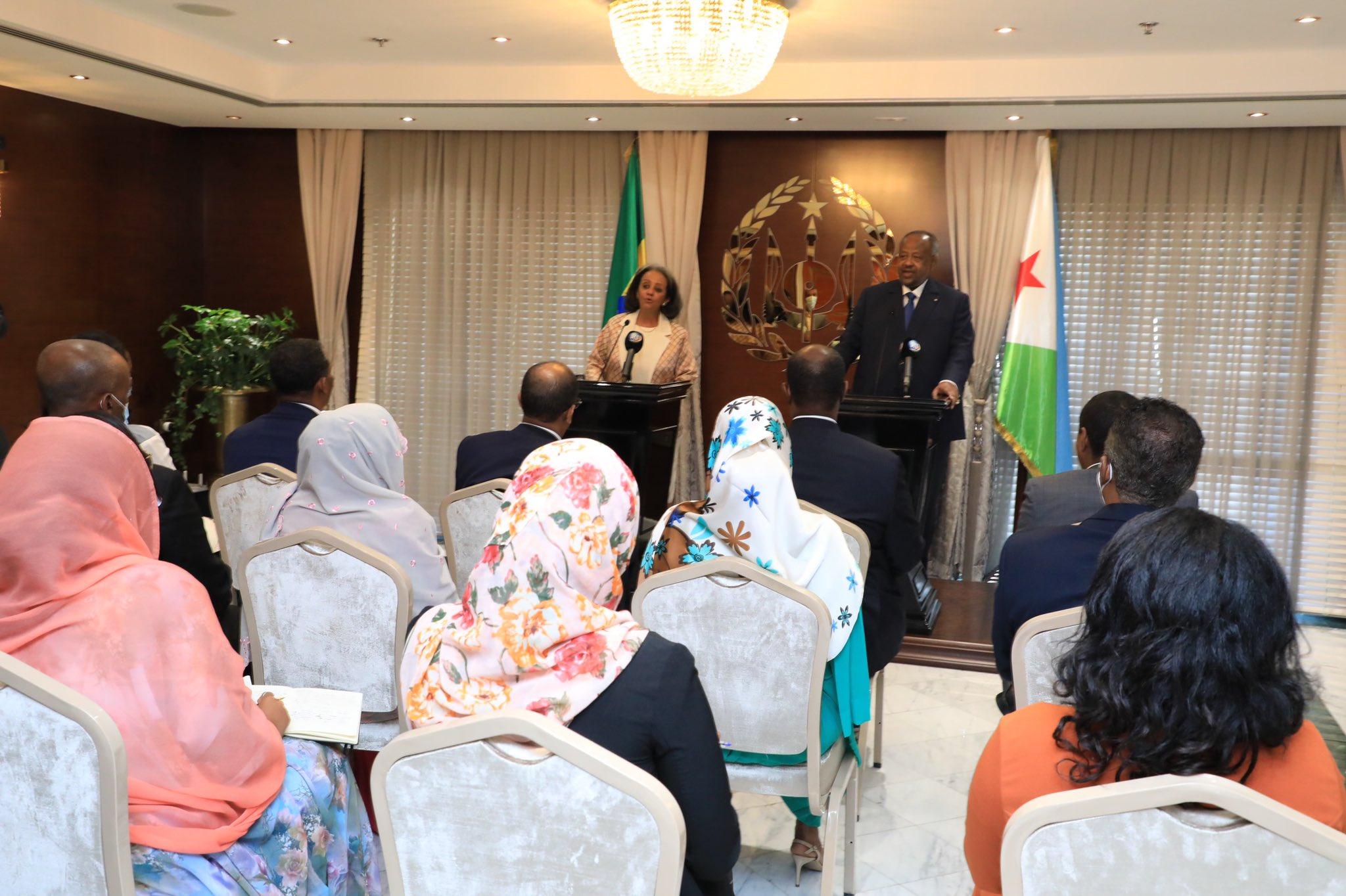
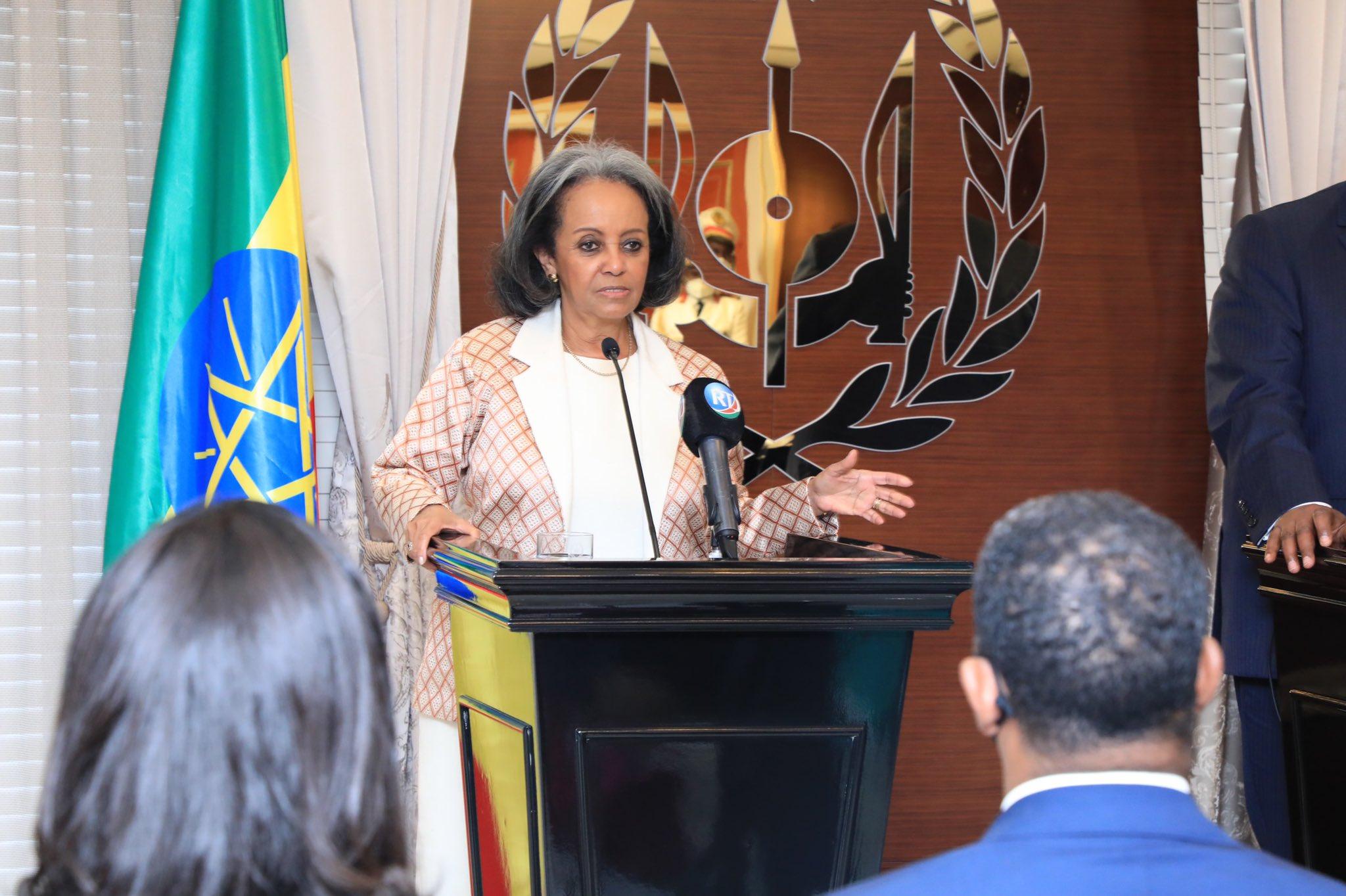 The President who arrived in Djibouti this morning held talks with President Ismail Omar Guelleh on bilateral and regional issues.
The President who arrived in Djibouti this morning held talks with President Ismail Omar Guelleh on bilateral and regional issues.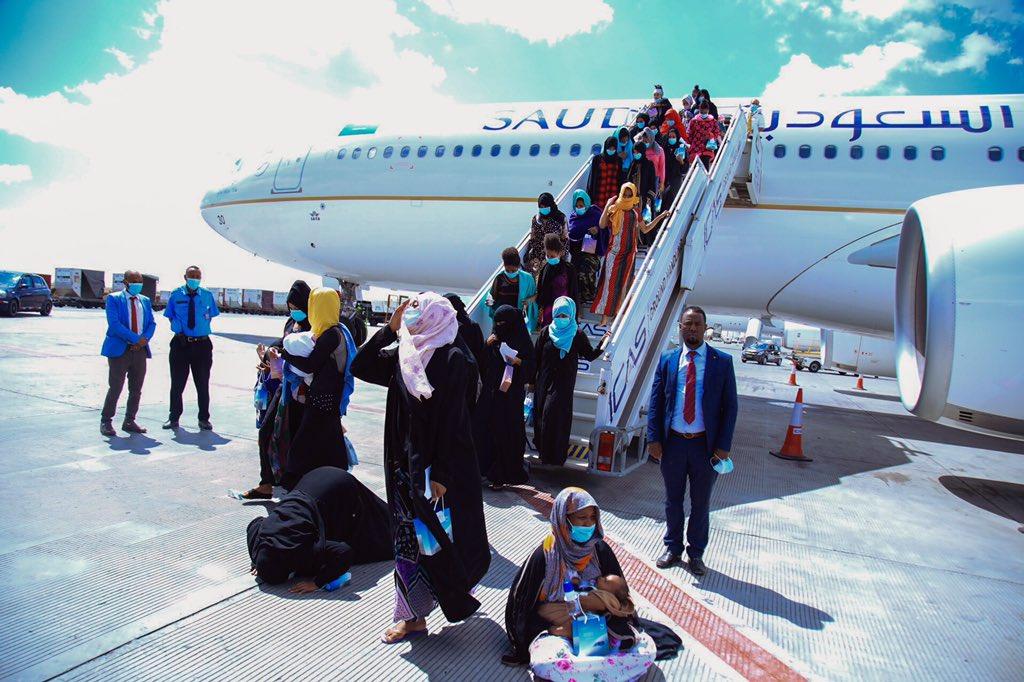
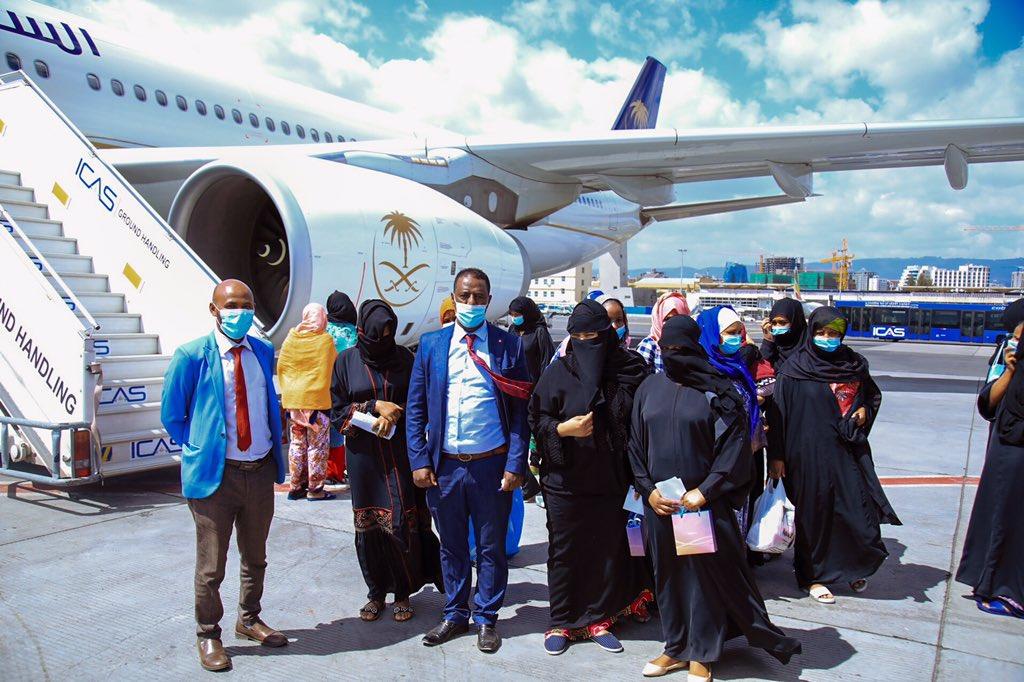
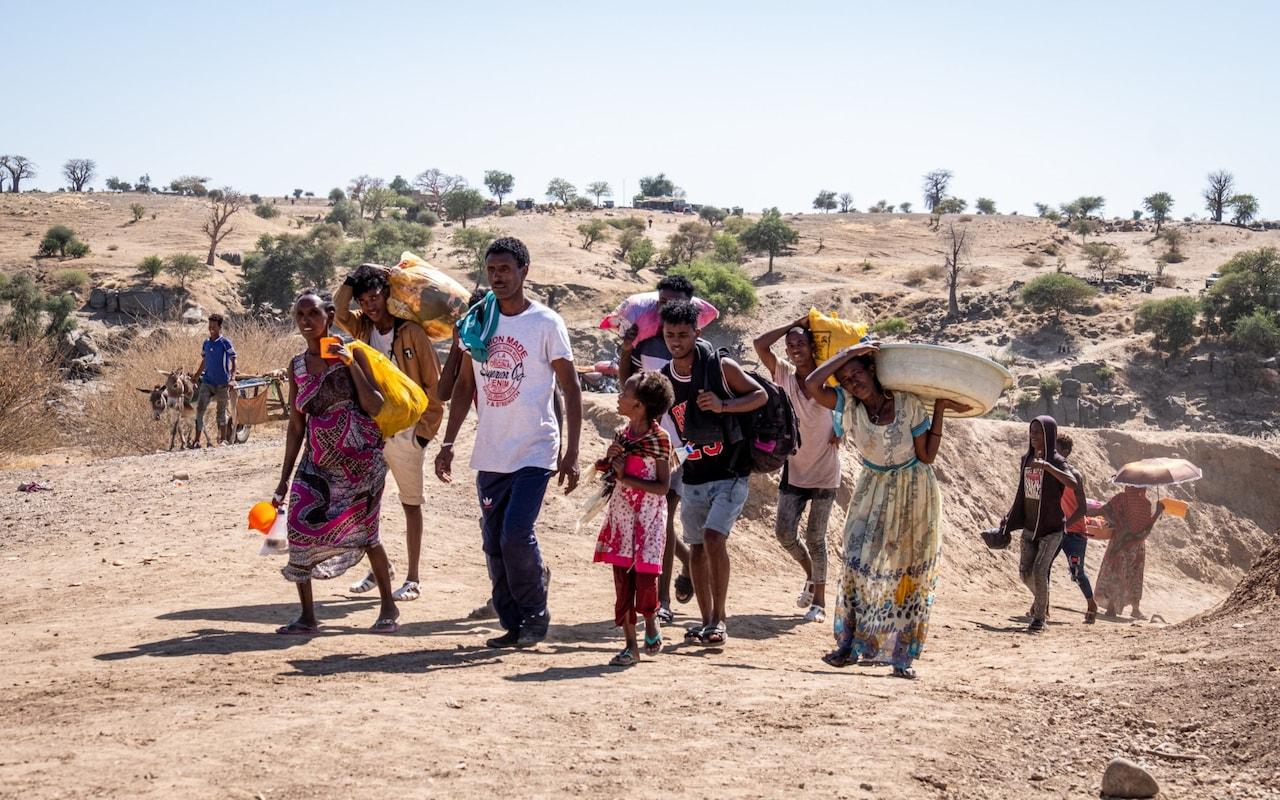


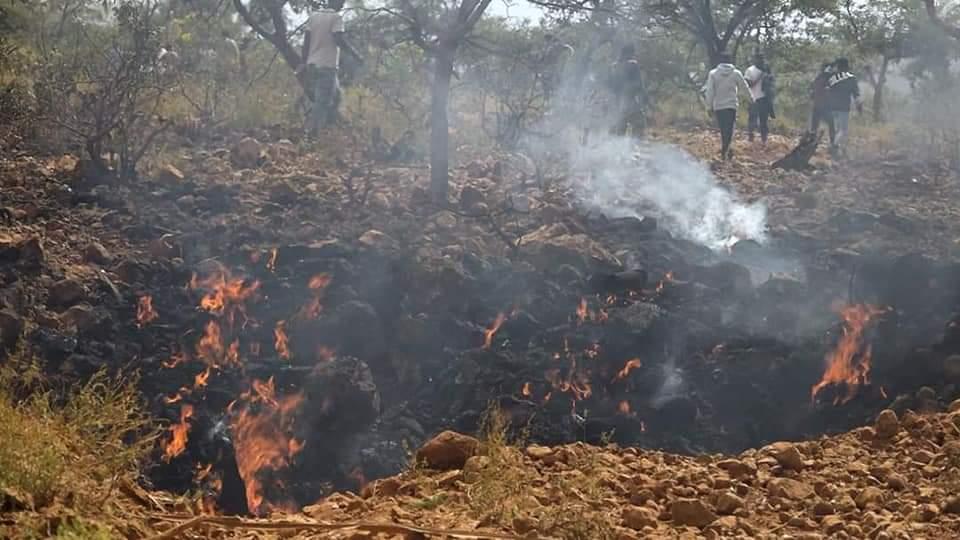
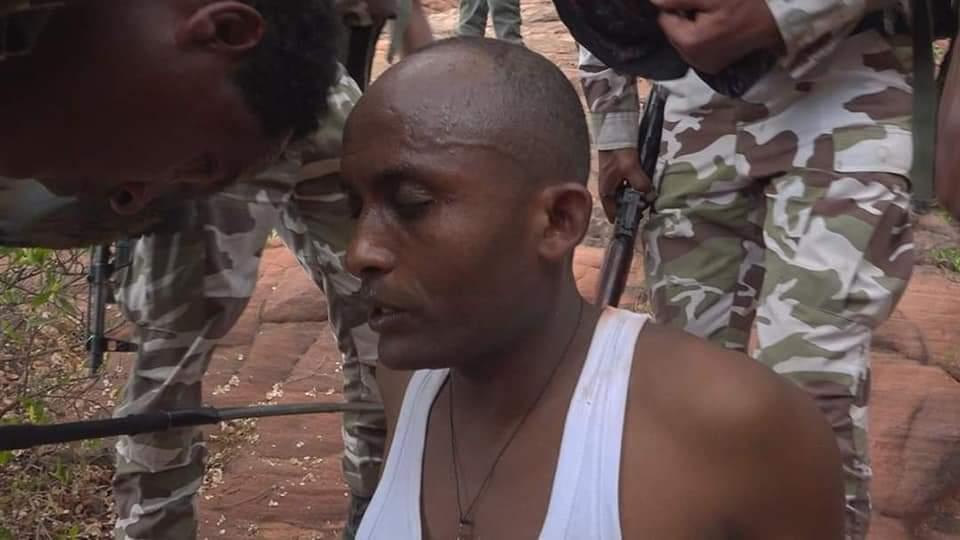
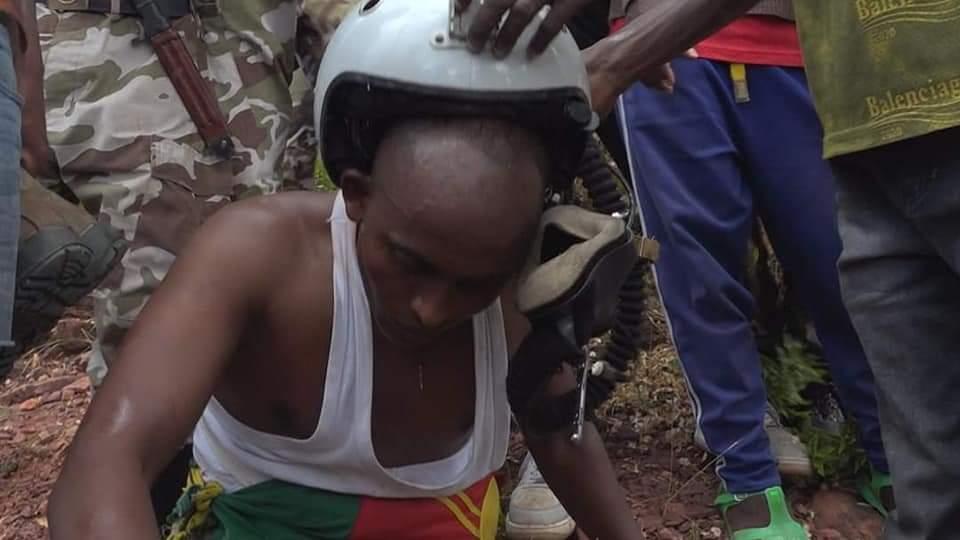
 I remember growing up in Harar during derg era, my mom always lamented about detachments from her ancestral land & churches of Gheralta. I hope this is the last war.
I remember growing up in Harar during derg era, my mom always lamented about detachments from her ancestral land & churches of Gheralta. I hope this is the last war.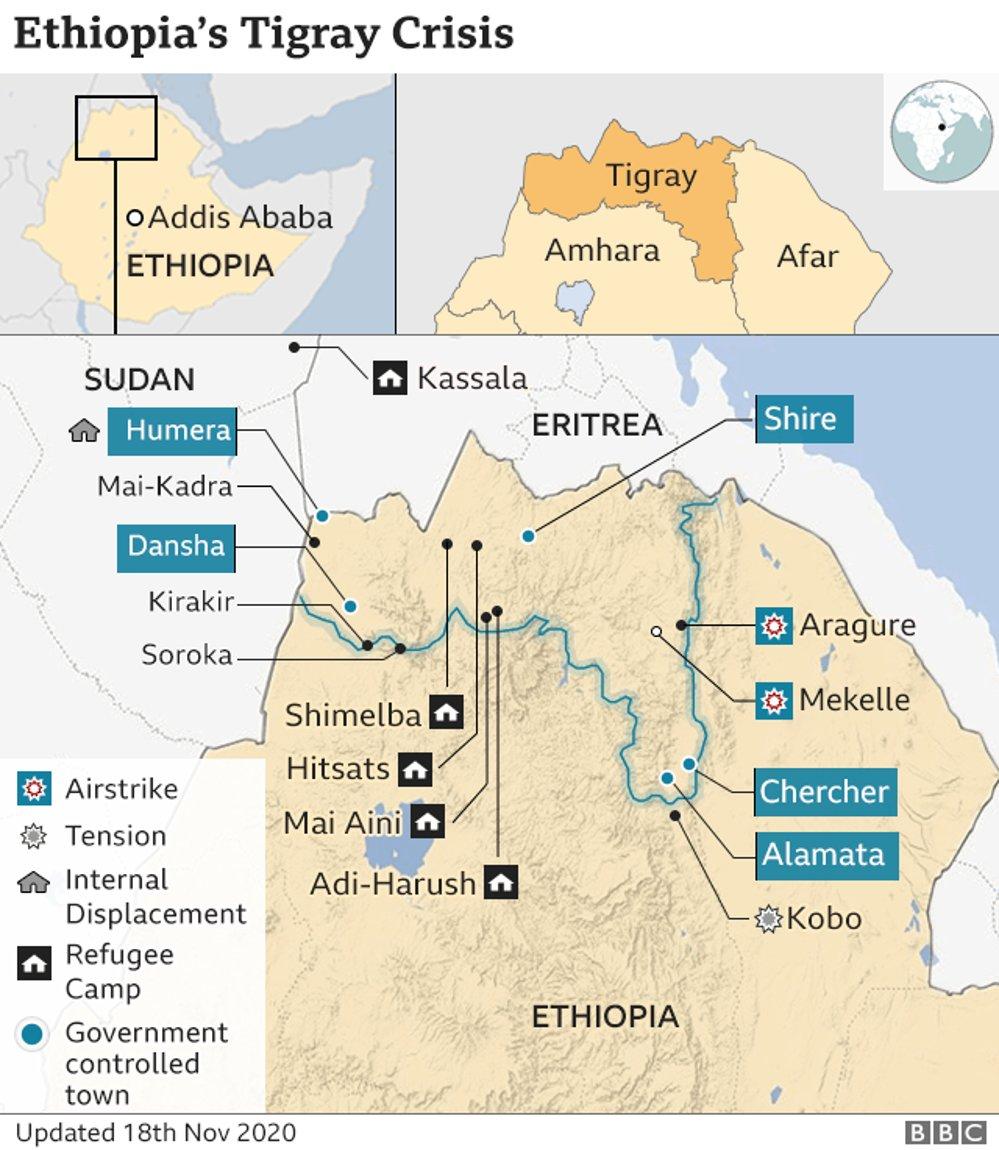 We are requesting for the international community to charge Abiy Ahmed Ali & Isaias Afwerki with war crimes.
We are requesting for the international community to charge Abiy Ahmed Ali & Isaias Afwerki with war crimes.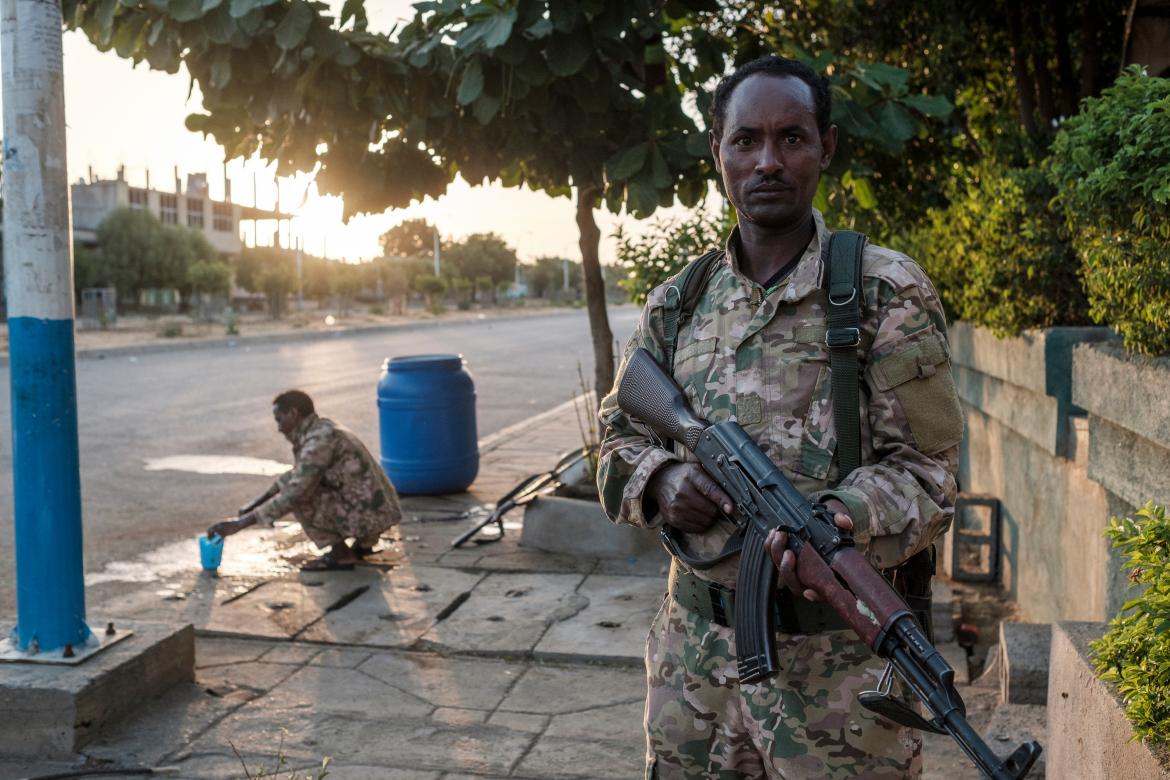
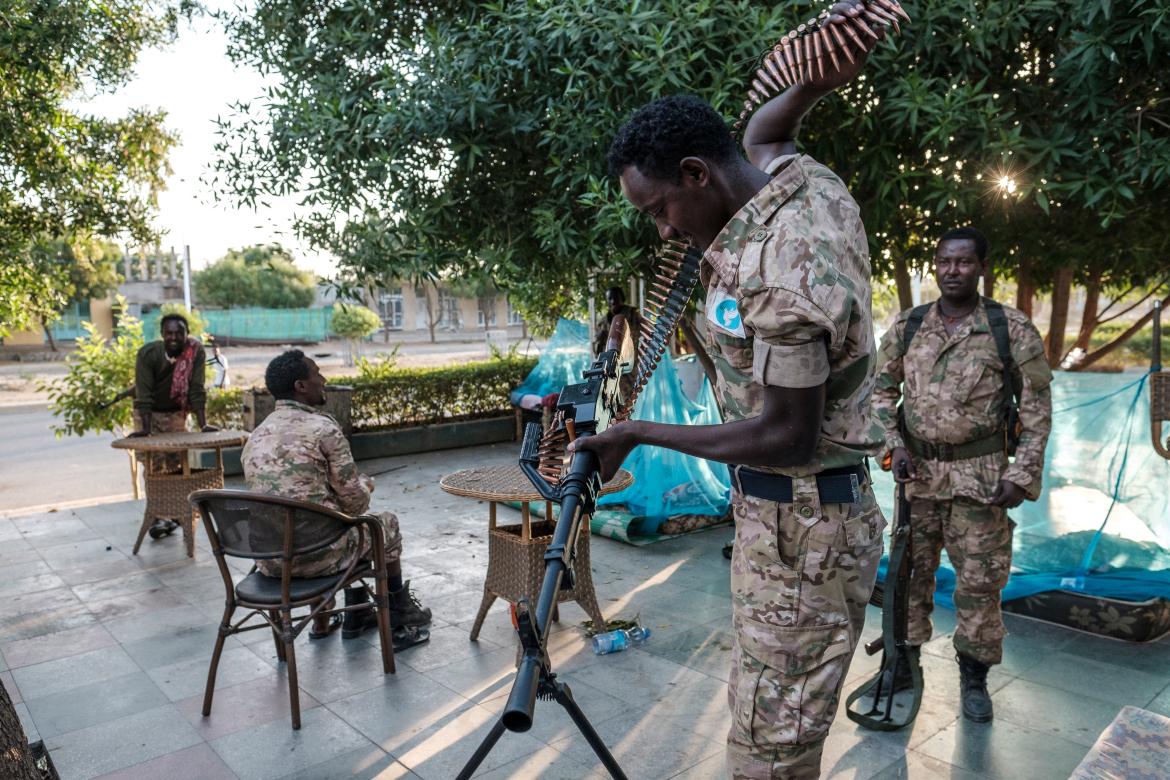
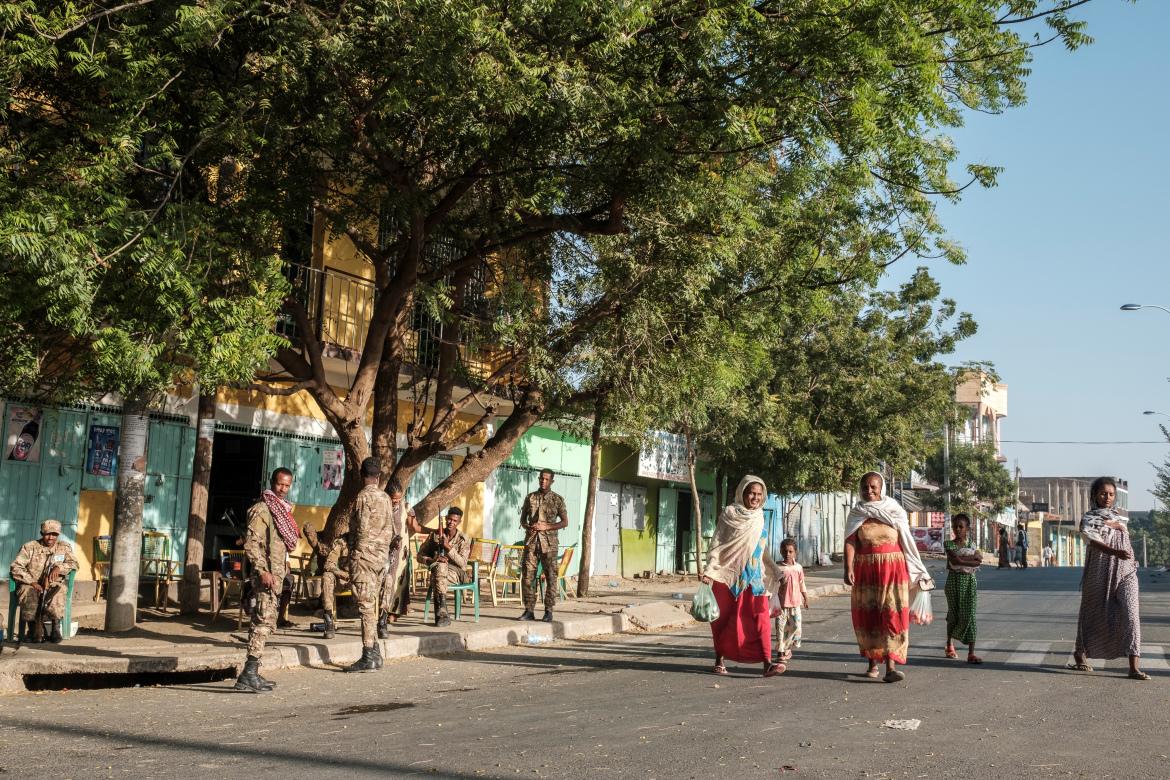
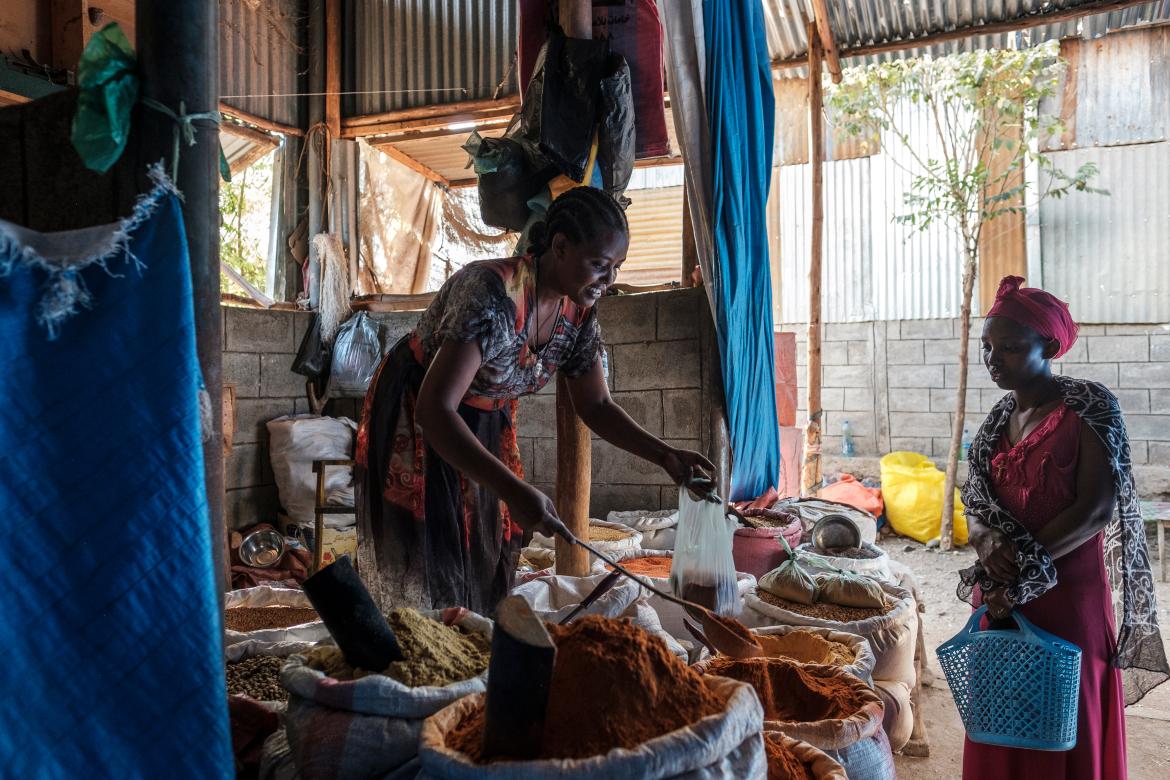
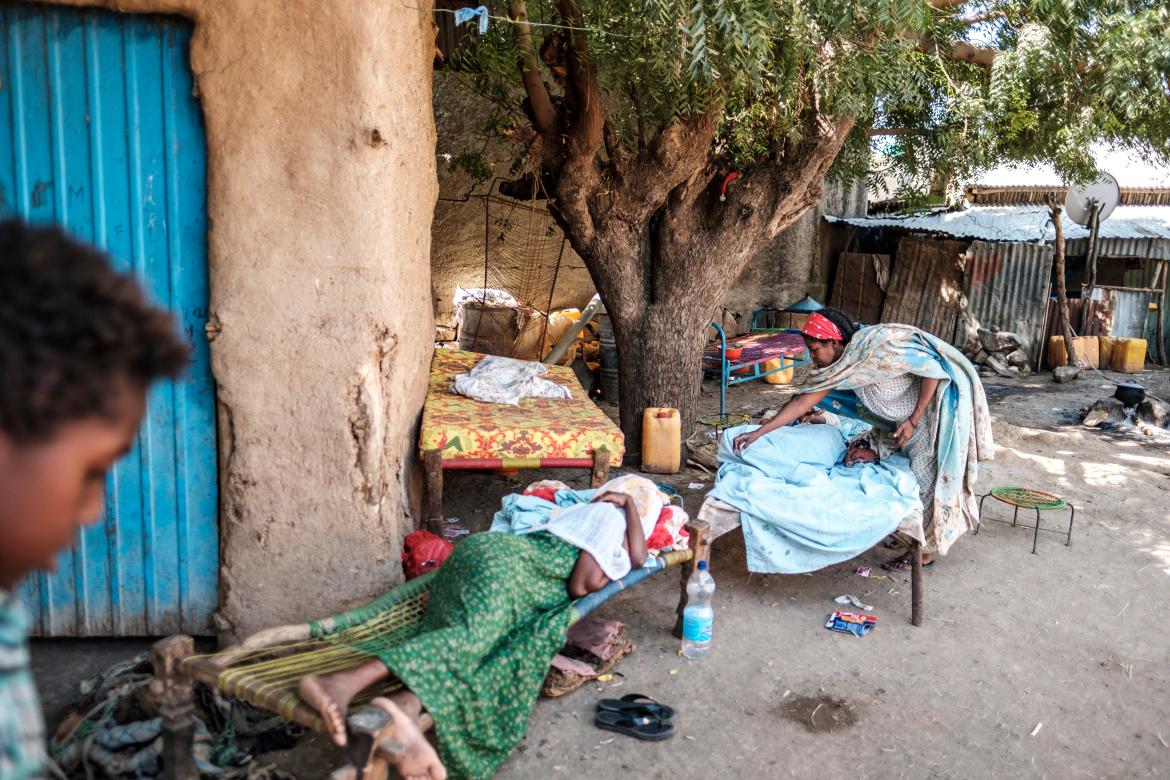
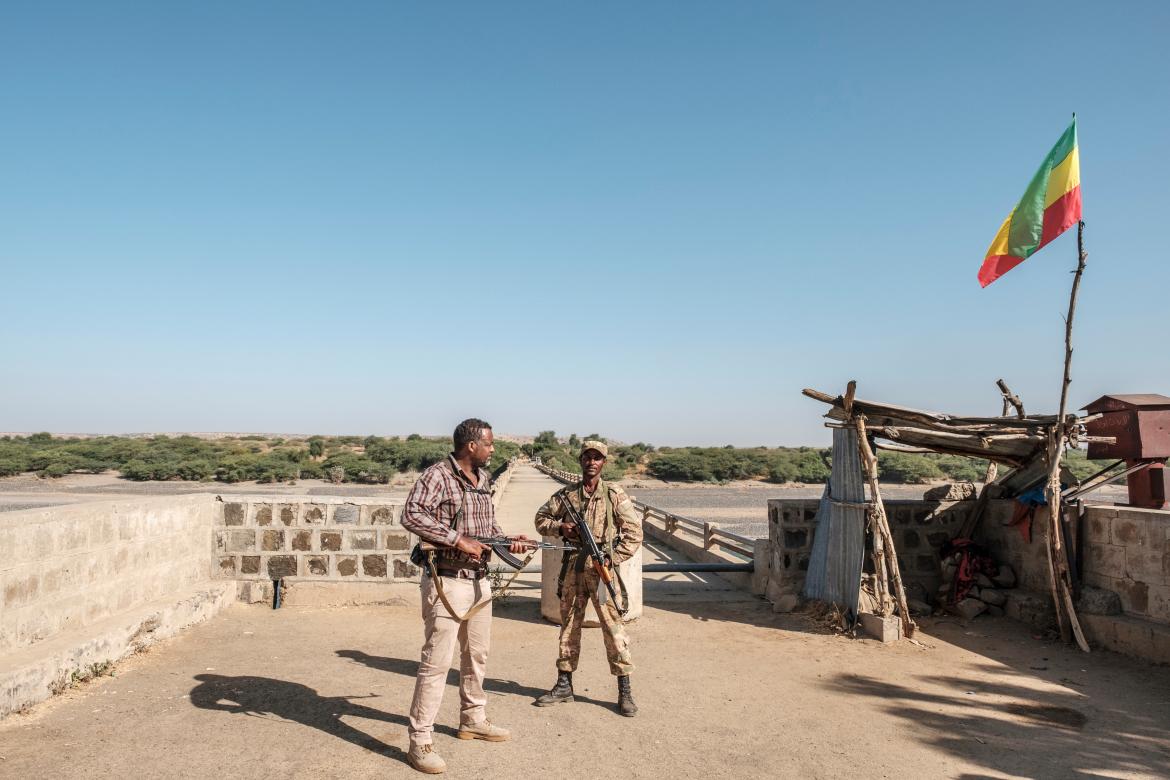
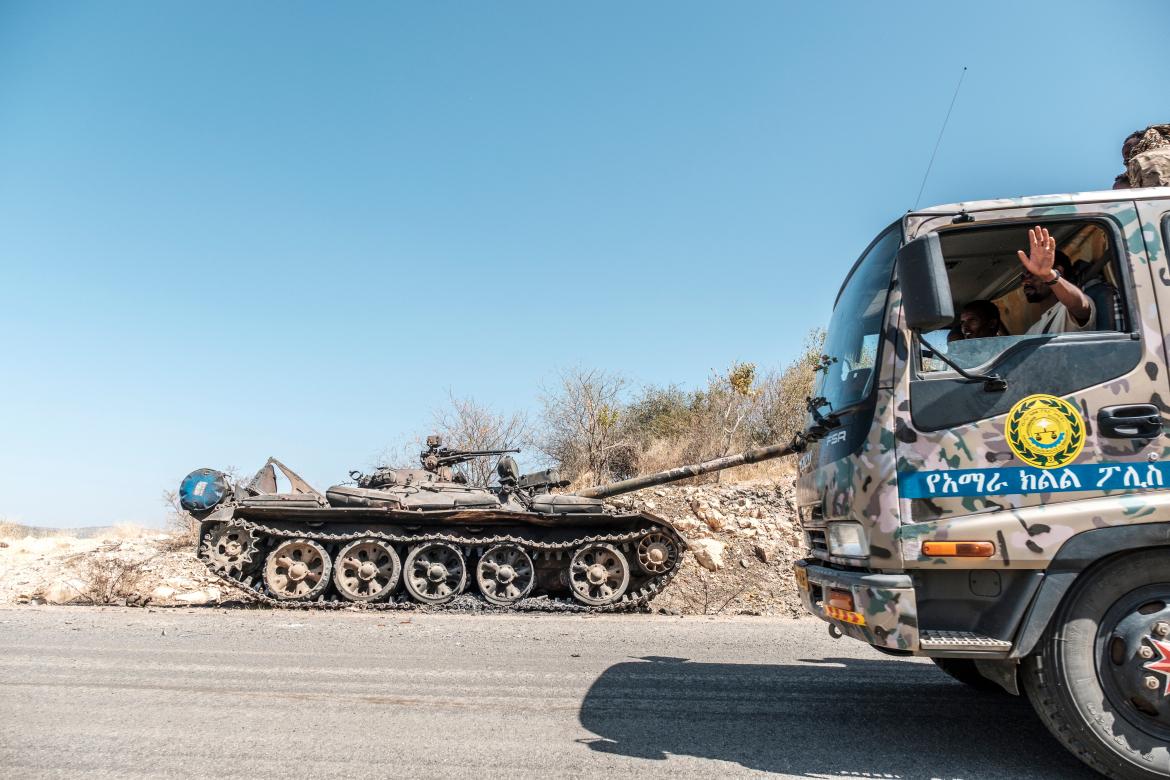
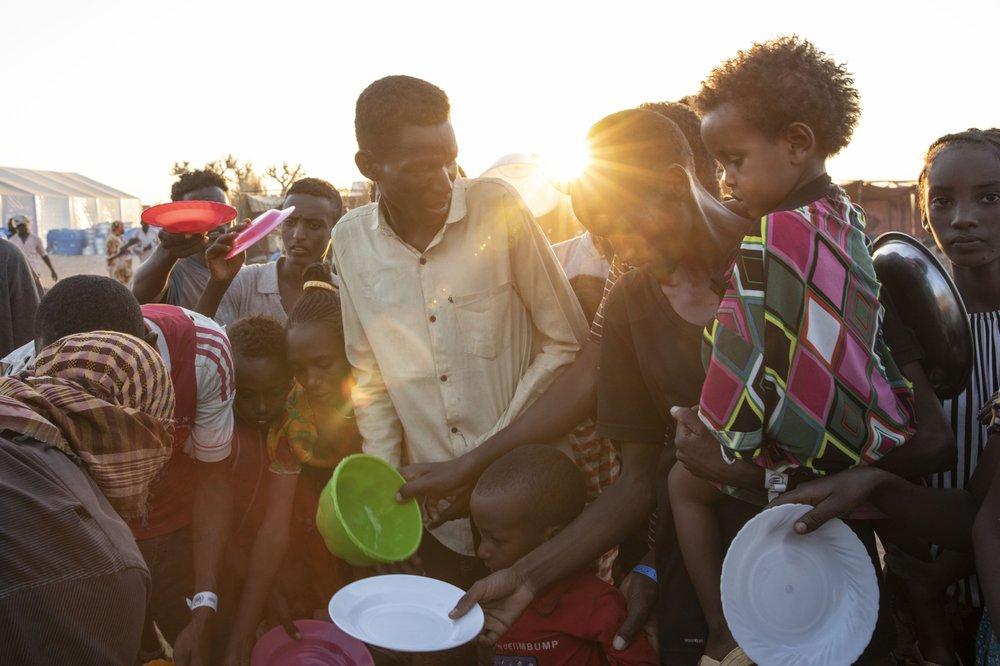 Tigray refugees who fled the conflict in Ethiopia’s Tigray region, wait to get cooked rice served by Sudanese local volunteers at Um Rakuba refugee camp in Qadarif, eastern Sudan, Monday, Nov. 23, 2020. Tens of thousands of people have fled a conflict in Ethiopia for Sudan, sometimes so quickly they had to leave family behind. There is not enough to feed them in the remote area of southern Sudan that they rushed to.
Tigray refugees who fled the conflict in Ethiopia’s Tigray region, wait to get cooked rice served by Sudanese local volunteers at Um Rakuba refugee camp in Qadarif, eastern Sudan, Monday, Nov. 23, 2020. Tens of thousands of people have fled a conflict in Ethiopia for Sudan, sometimes so quickly they had to leave family behind. There is not enough to feed them in the remote area of southern Sudan that they rushed to.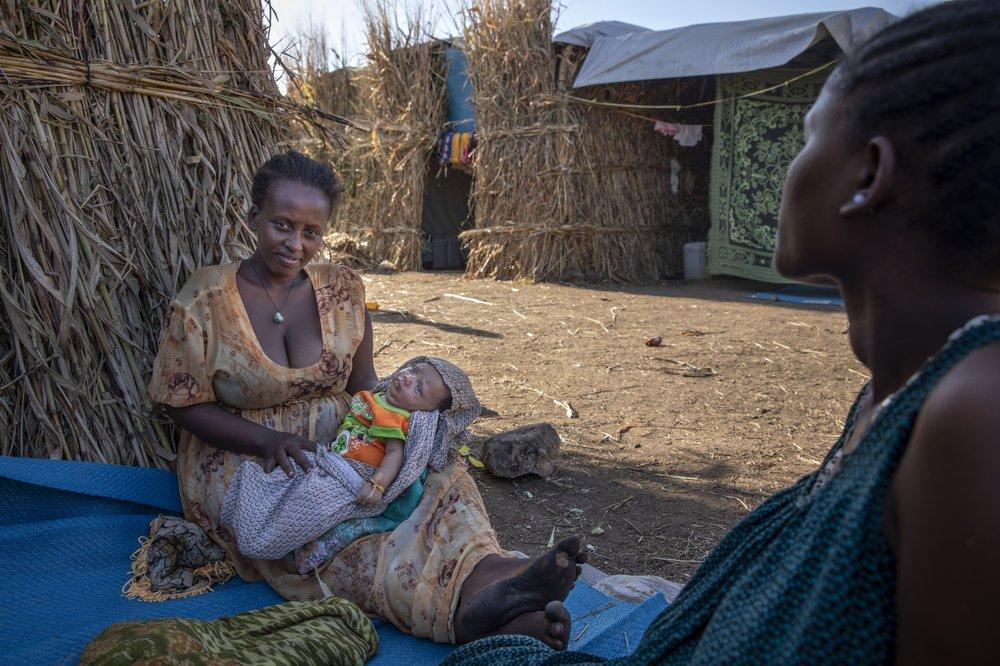
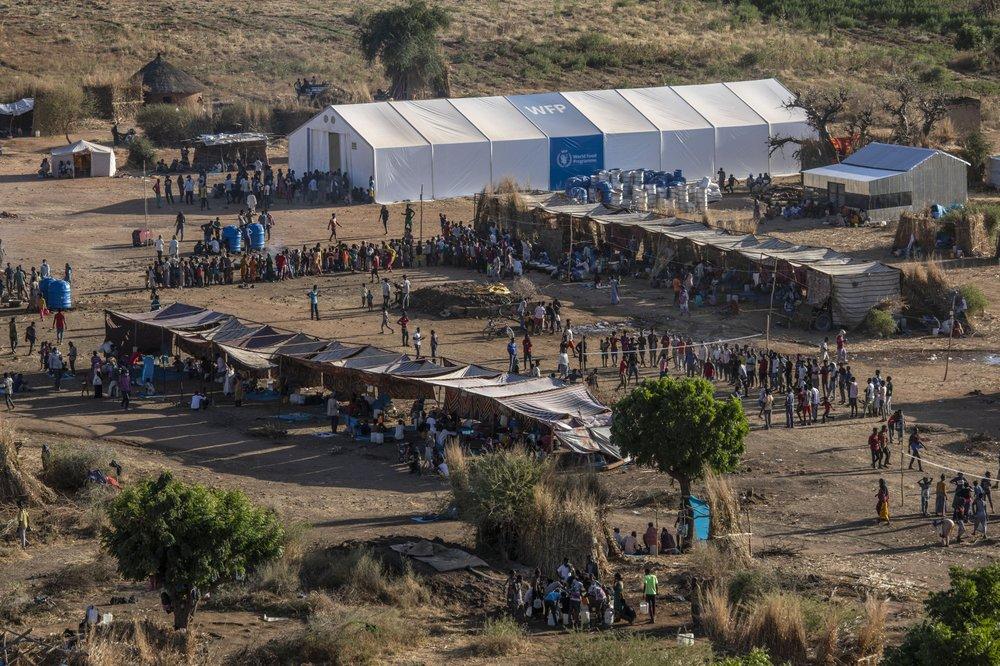 A general view of Um Rakuba refugee camp in Qadarif, eastern Sudan, Monday, Nov. 23, 2020. Tens of thousands of people have fled a conflict in Ethiopia for Sudan, sometimes so quickly they had to leave family behind. There is not enough to feed them in the remote area of southern Sudan that they rushed to
A general view of Um Rakuba refugee camp in Qadarif, eastern Sudan, Monday, Nov. 23, 2020. Tens of thousands of people have fled a conflict in Ethiopia for Sudan, sometimes so quickly they had to leave family behind. There is not enough to feed them in the remote area of southern Sudan that they rushed to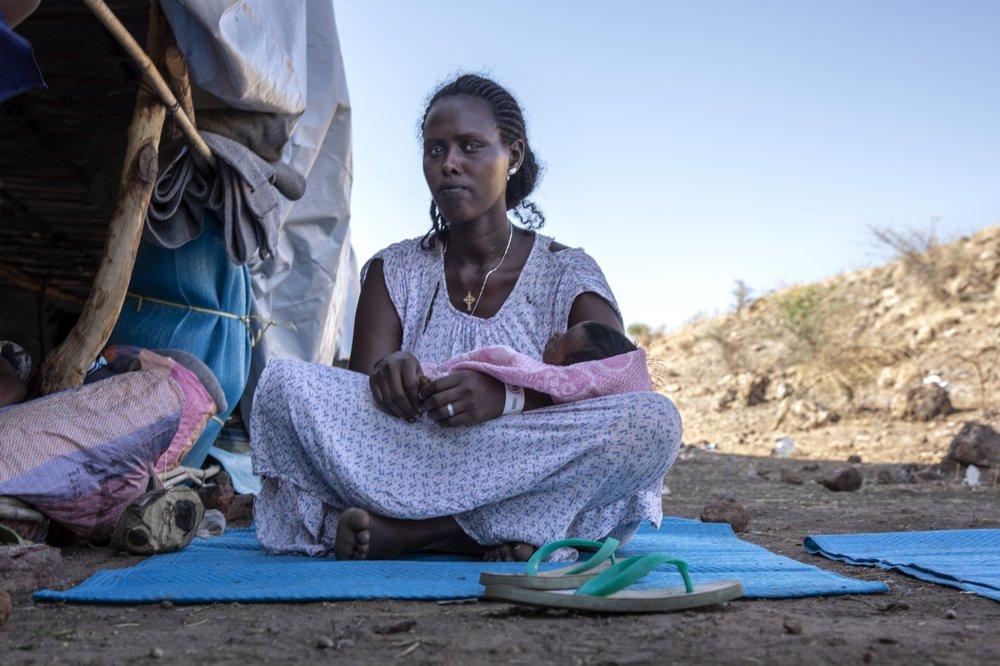 Terhas Tsfa, 25, who gave birth on a street as she fled the conflict in Ethiopia’s Tigray region, holds her baby at Um Rakuba refugee camp in Qadarif, eastern Sudan, Monday, Nov. 23, 2020. Tens of thousands of people have fled a conflict in Ethiopia for Sudan, sometimes so quickly they had to leave family behind. There is not enough to feed them in the remote area of southern Sudan that they rushed to
Terhas Tsfa, 25, who gave birth on a street as she fled the conflict in Ethiopia’s Tigray region, holds her baby at Um Rakuba refugee camp in Qadarif, eastern Sudan, Monday, Nov. 23, 2020. Tens of thousands of people have fled a conflict in Ethiopia for Sudan, sometimes so quickly they had to leave family behind. There is not enough to feed them in the remote area of southern Sudan that they rushed to Ethiopian Amhara refugee Blaines Alfao Eileen, 8-months pregnant and who fled the conflict in Ethiopia, stands near her shelter, at Um Rakuba refugee camp in Qadarif, eastern Sudan, Monday, Nov. 23, 2020. Tens of thousands of people have fled a conflict in Ethiopia for Sudan, sometimes so quickly they had to leave family behind. There is not enough to feed them in the remote area of southern Sudan that they rushed to
Ethiopian Amhara refugee Blaines Alfao Eileen, 8-months pregnant and who fled the conflict in Ethiopia, stands near her shelter, at Um Rakuba refugee camp in Qadarif, eastern Sudan, Monday, Nov. 23, 2020. Tens of thousands of people have fled a conflict in Ethiopia for Sudan, sometimes so quickly they had to leave family behind. There is not enough to feed them in the remote area of southern Sudan that they rushed to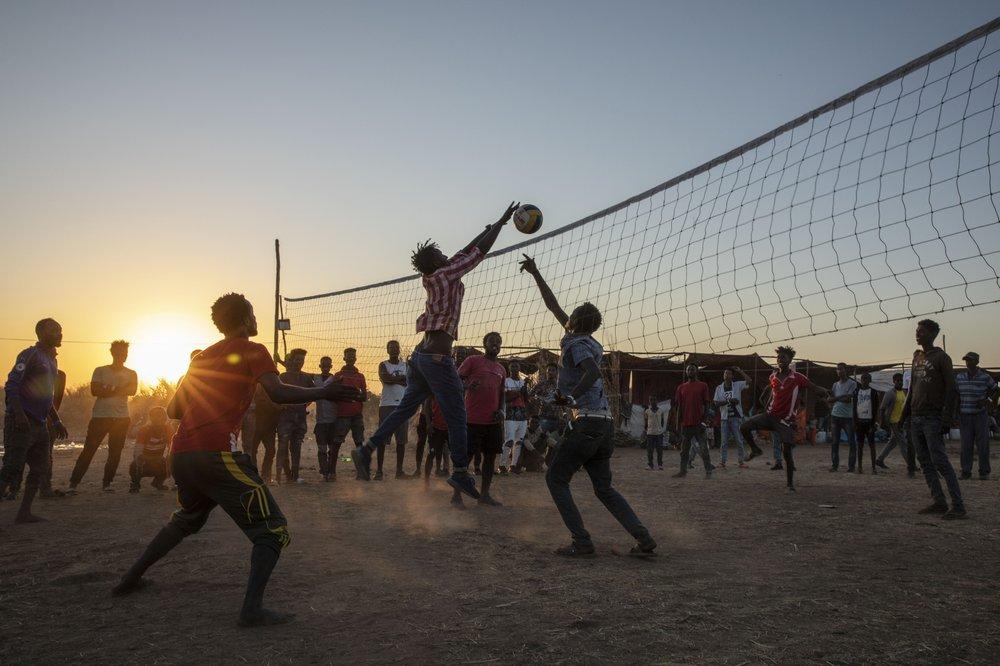 Tigray refugees who fled the conflict in Ethiopia’s Tigray region, play volleyball at Um Rakuba refugee camp in Qadarif, eastern Sudan, Monday, Nov. 23, 2020. Tens of thousands of people have fled a conflict in Ethiopia for Sudan, sometimes so quickly they had to leave family behind. There is not enough to feed them in the remote area of southern Sudan that they rushed to.
Tigray refugees who fled the conflict in Ethiopia’s Tigray region, play volleyball at Um Rakuba refugee camp in Qadarif, eastern Sudan, Monday, Nov. 23, 2020. Tens of thousands of people have fled a conflict in Ethiopia for Sudan, sometimes so quickly they had to leave family behind. There is not enough to feed them in the remote area of southern Sudan that they rushed to.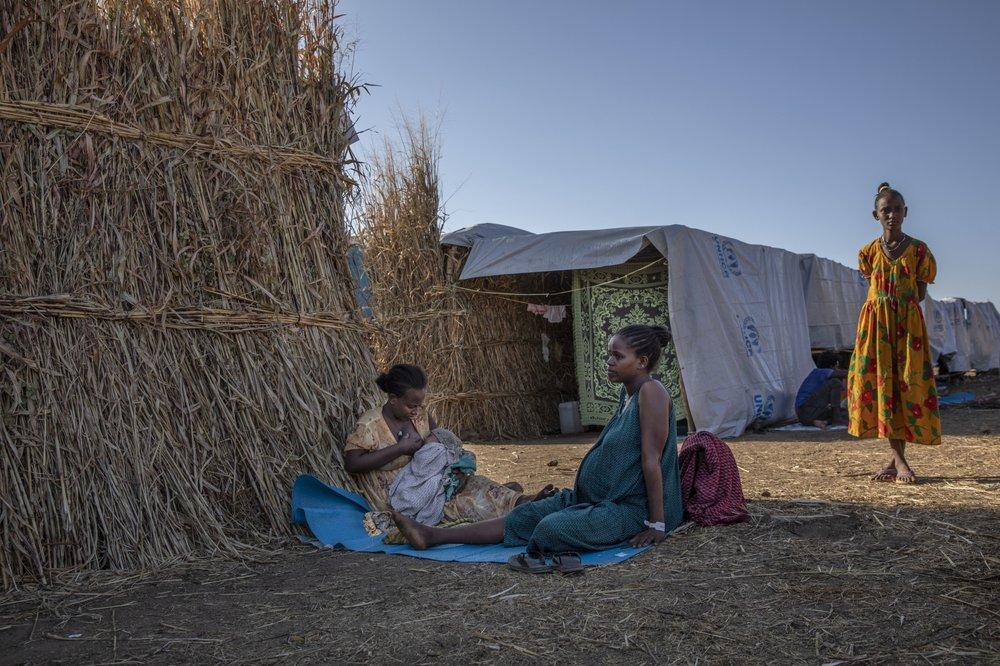 Ethiopian Amhara refugee 8-month pregnant Blaines Alfao Eileen, right, sits with Tigray refugee 25-year-old Lemlem Haylo Rada, holding her one-month old baby who was born on a street as she fled, at Um Rakuba refugee camp in Qadarif, eastern Sudan, Monday, Nov. 23, 2020. Tens of thousands of people have fled a conflict in Ethiopia for Sudan, sometimes so quickly they had to leave family behind. There is not enough to feed them in the remote area of southern Sudan that they rushed to
Ethiopian Amhara refugee 8-month pregnant Blaines Alfao Eileen, right, sits with Tigray refugee 25-year-old Lemlem Haylo Rada, holding her one-month old baby who was born on a street as she fled, at Um Rakuba refugee camp in Qadarif, eastern Sudan, Monday, Nov. 23, 2020. Tens of thousands of people have fled a conflict in Ethiopia for Sudan, sometimes so quickly they had to leave family behind. There is not enough to feed them in the remote area of southern Sudan that they rushed to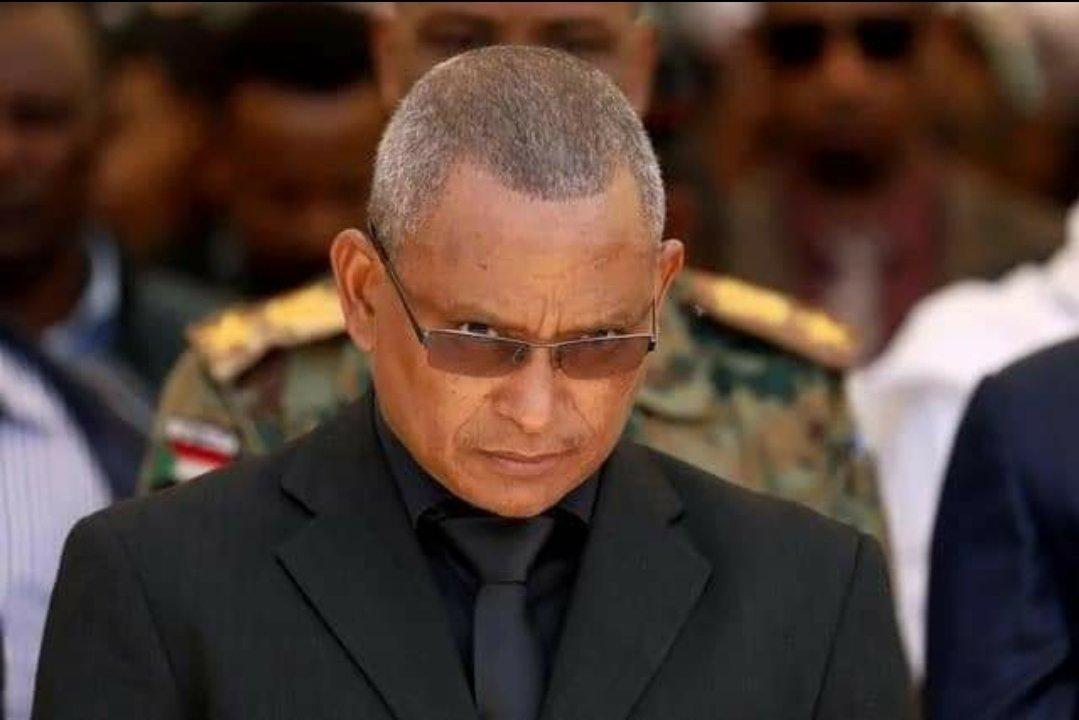 Our right to self determination ‘ ll not be suppressed by any force. Our proud people will prevail!
Our right to self determination ‘ ll not be suppressed by any force. Our proud people will prevail!
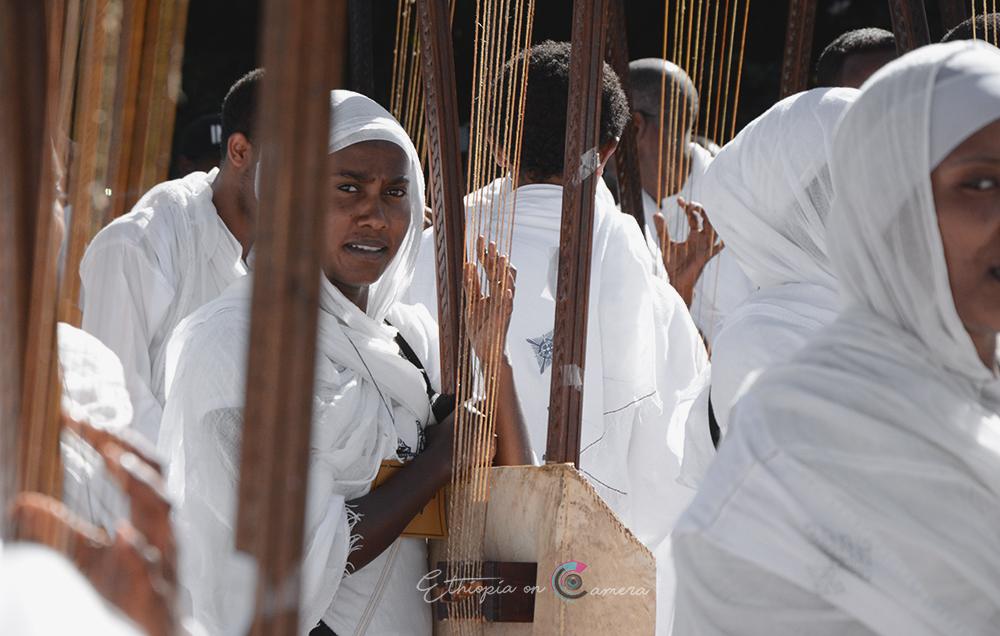
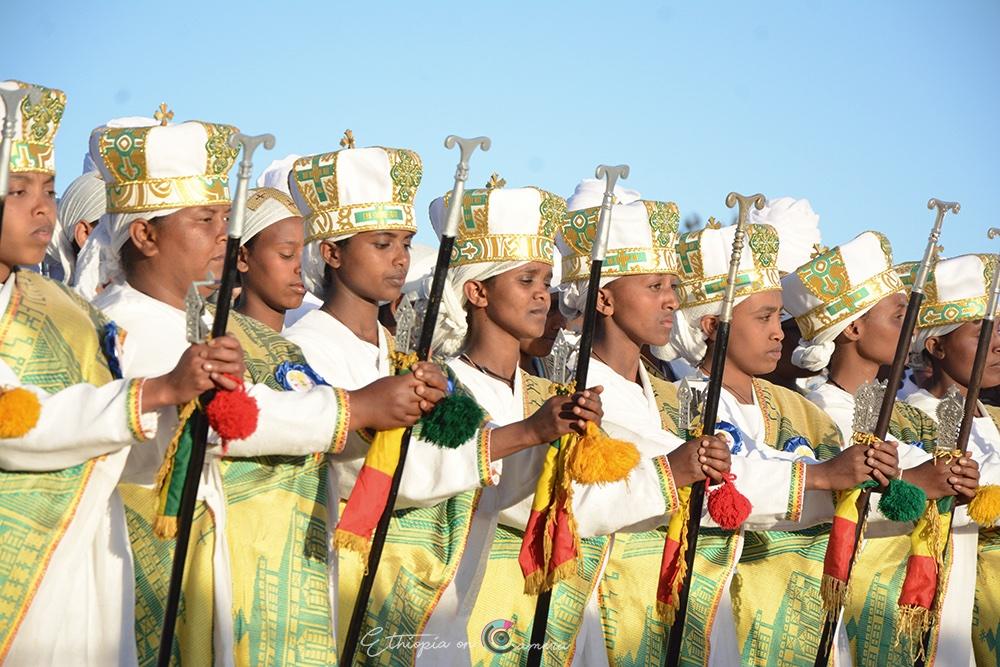
 A day of colourful feast and fervor especially in Axum Tsion,Tigray.
A day of colourful feast and fervor especially in Axum Tsion,Tigray. Among them, Major General Zewdu Kiros who until 2017, was Deputy Force Commander for UN Peacekeepers in Abyei, Sudan.
Among them, Major General Zewdu Kiros who until 2017, was Deputy Force Commander for UN Peacekeepers in Abyei, Sudan.
